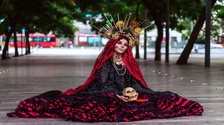ابحث بين معلمي الإنجليزية المتعددين...
[محذوف]
Noun classifiers! Use or not to use?
The sentence 'itu bukan setangkai bunga biru muda' uses the noun classifier 'setangkai'. But when I say 'itu bunga' I don't use that noun classifier. Why? Is 'itu setangkai bunga' wrong?
Also I'd like to know how important those noun classifiers are, because I've learned many and it's confusing.
I'm learning it as follows:
- seorang (classifier for human beings)
- sebatang (for long objects)
- sebuah (non-living things)
- seekor (for animals)
- setangkai (long thin items)
Etc.
I find it really strange, since a flower, for example, is a non-living thing (sebuah), can be a long object (sebatang) and is considered a thin item (setangksi), but the correct, according to what I've read, is the last option. Why again?
٢٠ يناير ٢٠١٥ ٢٢:٥٠
الإجابات · 4
You know, sometimes the noun classifier is omitted in Indonesian writing, especially speaking.
For example:
Ini setangkai bunga mawar. (This is a rose)
Ini bunga mawar (This is a rose) you can say this even though the rose is only one. it doesn't really matter.
I think it is not only when the flower is still planted on the ground. For example:
-- I am holding a flower. Someone asks me:
Q= Bunga apa itu? (what flower is that?
A= Ini bunga mawar. (it's a rose)
See, you don't need to say: Ini setangkai bunga mawar. It will be too weird to say that in conversation.
So my conclusion is that it depends on the context. And also in conversation, noun classifier is often omitted.
For the other question about the classification of "flower":
"setangkai" is actually for something that has thin "stalk" or "stem"
So if any things has a thin stalk or stem, we must use "setangkai" as the noun classifier.
But if it has a thick stalk/stem, we must use "sebatang"
They are both special noun classifiers.
It is included: "selembar" "sehelai" "seutas"
All of them are for non living things, but they are special. Means that they are for specific things.
So, other than those special noun classifiers for non-living things, that's the time we use "sebuah".
In conclusion, we use "sebuah' for the non-living things that are not included in those special noun classifiers I mentioned before.
٢٢ يناير ٢٠١٥
You've already following the right one:
- seorang (classifier for human beings)
- sebatang (for long objects)
- sebuah (non-living things)
- seekor (for animals)
- setangkai (long thin items)
I understand why setangkai bunga can be so confusing for you.
We use "setangkai bunga" to emphasize the quantity of the flower (setangkai means 1 tangkai bunga) or to talk about the flower that has already picked.
But we just say "itu bunga" when the flower still grows in the soil or we just talk about flower in general without talking about the quatity.
٢١ يناير ٢٠١٥
لم تجد إجاباتك بعد؟
اكتب اسألتك ودع الناطقين الأصليين باللغات يساعدونك!



